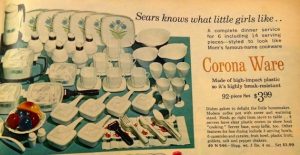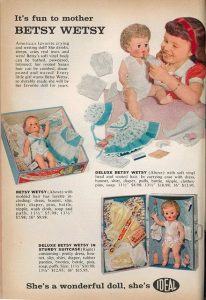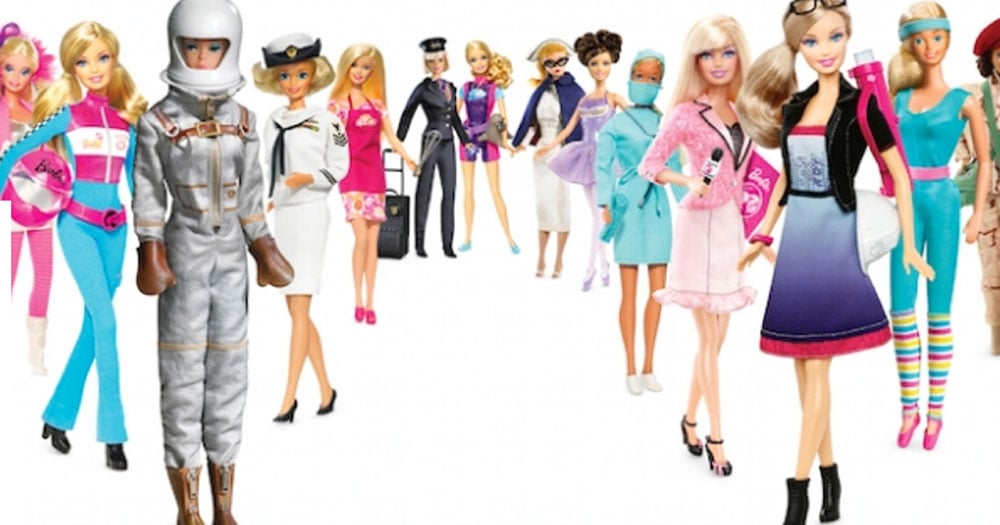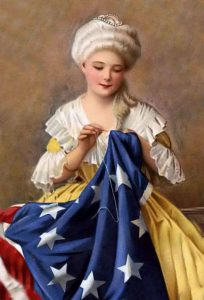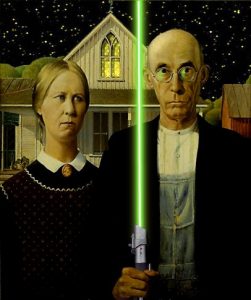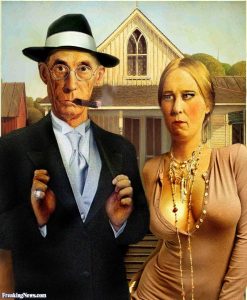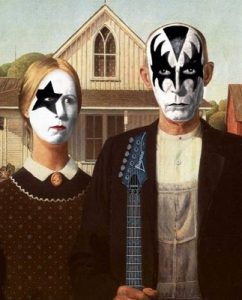BY OWEN MCCUE

Sitting in class earlier this week and listening to the conversation on Barbie, I was hoping to find a topic for my blog. Then someone threw out the phrase, ‘Barbie World’ and something clicked. “I’m a Barbie girl, in a Barbie world”[1] … I’d heard that line before.
The line comes from the Danish dance-pop group Aqua’s 1997 song ‘Barbie Girl.’ Though the song was voted the worst song of the 1990s by Rolling Stone magazine’s Readers Poll in 2011, the catchy tune is one I’m sure almost everyone knows.[2] I remember hearing it and singing along quite a few times growing up.
“Playfully naughty Euro-dance ditty,” is how Billboard’s Chuck Taylor described the song in August 1997.[3] Take a look at the music video, and I think that would be a good description. The song and the video are both cartoonish in a way, yet very, very sexualized.
The music video is full of pink. The female, who is supposed to be Barbie, has lots of makeup and several different outfits throughout. The band obviously does not see Barbie as some type of symbol for feminism or an innocent children’s toy. In fact, it’s quite the opposite. This was all lost on me as I grew up listening to it, but examining the lyrics now… Yikes.
https://www.youtube.com/watch?v=ZyhrYis509A
You can brush my hair, undress me everywhere.
I’m a blond bimbo girl, in a fantasy world. / Dress me up, make it tight, I’m your dolly.
Make me walk, make me talk, do whatever you please. / I can act like a star, I can beg on my knees.[4]
Those are all lines sung by a female member of the band, playing the role of Barbie in the song and video. The male voice, or Ken, is even less subtle with his sexual innuendos, starting the song with the line, “Do you want to go for a ride?” which is supplemented with a wink in the video.[5] I don’t think he is asking Barbie if she wants to hop in his car. That’s made pretty obvious with the later line, “You’re my doll, rock’n’roll, feel the glamor in pink. / Kiss me here, touch me there, hanky panky.”[6]
The way Barbie is portrayed in this song reminds me of Barbie’s origins. She was a knock off from the “Bild Lilli” doll, a German doll for adult males that was essentially a “three dimensional pin-up.”[7] This song to me feels like a sarcastic take on the American Icon, highlighting all the damaging stereotypes Barbie portrays.
https://www.youtube.com/watch?v=hwu6NrxVVFk
One of the most interesting parts of this song is that Mattel originally sued the band for copyright infringement.[8] The makers of the children’s toy were not so happy that their product name was being associated in this sexual manner. The case went all the way to the Supreme Court. It was ruled that the song was parody and therefore did not violate any copyright laws.
The reason I may remember having heard it so much growing up is that Mattell actually used the song in one of its marketing campaigns in 2009.[9] Though the lyrics were certainly altered a bit, the hook remained the same: “I’m a Barbie girl, in the Barbie world / Life in plastic, it’s fantastic.” I can understand the idea of having a catchy song associated with your product, but that just screams all kinds of weird. I think the saga of the ‘Barbie Girl’ song fits right into some of the other interesting chapters of Barbie’s “playfully naughty” history.
[1] Aqua. “Barbie Girl.” Released May 1997. In Universal, MCA.
[2] “Readers Poll: The Worst Songs of the Nineties.” Rolling Stone. August 31, 2011. Accessed March 29, 2018. https://www.rollingstone.com/music/pictures/readers-poll-the-worst-songs-of-the-nineties-20110831/1-aqua-barbie-girl-0315695.
[3] Taylor, Chuck. “Danish breakout group Aqua toys with U.S. pop success with its ‘Barbie Girl.'(Air Waves)(Column).” Billboard, 30 Aug. 1997, p. 92+. Academic OneFile, http://link.galegroup.com/apps/doc/A19845280/AONE?u=temple_main&sid=AONE&xid=595116d9. Accessed 29 Mar. 2018.
[4] Aqua. “Barbie Girl.”
[5] Ibid.
[6] Ibid.
[7] Lord, M. G. Forever Barbie: The Unauthorized Biography of a Real Doll. Fredericton, N.B.: Goose Lane Editions, 2004.
[8] Elliott, Stuart. “Years Later, Mattel Embraces ‘Barbie Girl’.” The New York Times. August 26, 2009. Accessed March 29, 2018. https://mediadecoder.blogs.nytimes.com/2009/08/26/years-later-mattel-embraces-barbie-girl/.
[9] Elliott, Stuart.




